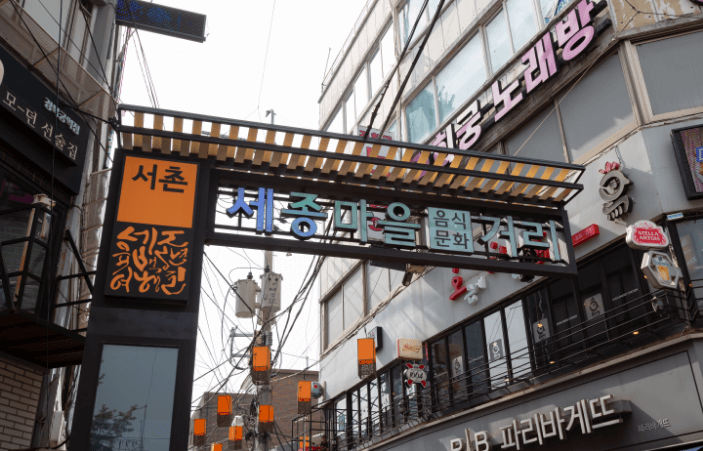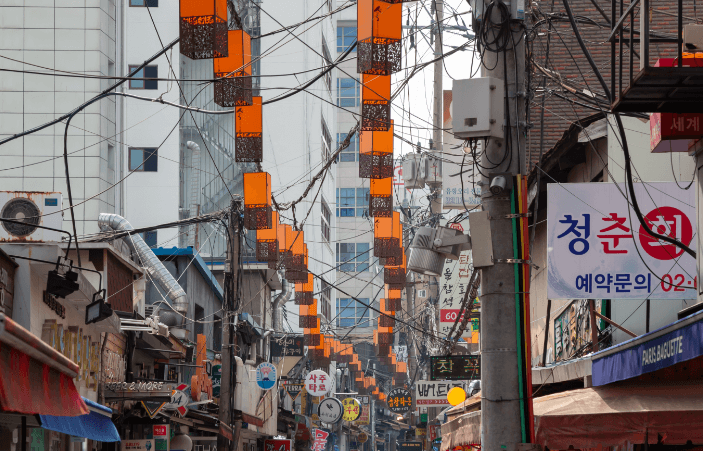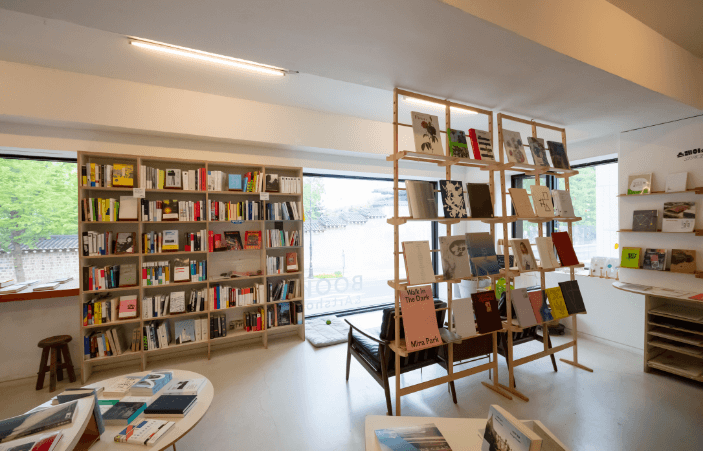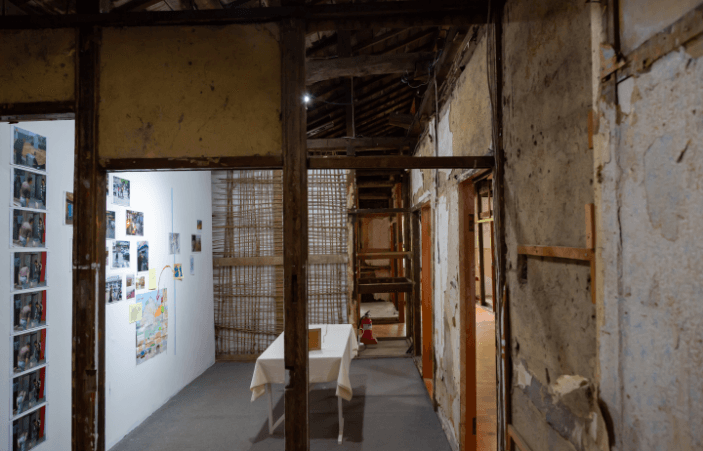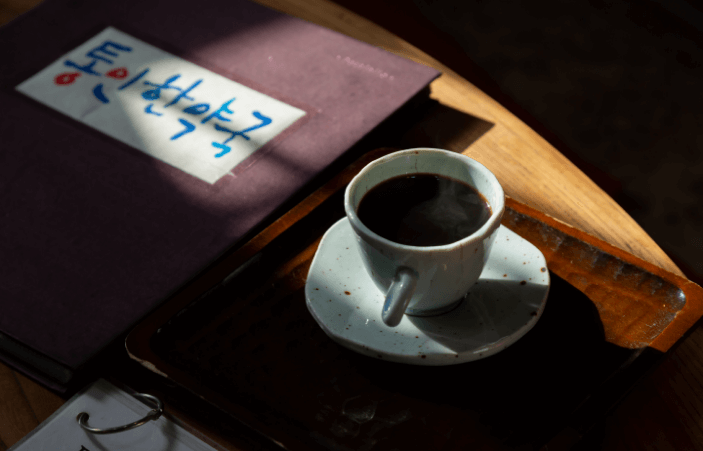With Gyeongbokgung Palace as the center, the area to the east is called Bukchon, and the area to the west is known as Seochon. While Bukchon was populated with grand traditional tiled houses for high-ranking officials, Seochon to the west of Gyeongbokgung Palace was a neighborhood of commoners with a more modest culture. This atmosphere persisted through the Japanese colonial period and the subsequent liberation, and remnants of the old commoner culture are still evident throughout Seochon today.
* Walking Standard

They say, "After hiking Geumgangsan, you're bound to be hungry." Thus, Sejong Village Food Culture Street is the ideal spot to fortify yourself before exploring the area's commoner culture. From Exit 2 of Gyeongbokgung Station on Subway Line 3, walking 20 meters will lead to an alley marked with the sign "Sejong Village Food Culture Street." Originally known as Geumcheongyo Market, the name was changed in 2011 when the Jongno District named the area "Sejong Village." Notably, this location is the birthplace of King Sejong. He was born in a residence west of Gyeongbokgung Palace when his father, King Taejong, was still a prince.
Contrary to its name, Sejong Village Food Culture Street vibrantly showcases the culture of the common folk rather than royalty. Decades-old establishments stand alongside contemporary hotspots opened by younger generations, each with unique culinary offerings that attract countless visitors. There are now restaurants not only along the main street but also in every side alley, making choosing where to eat a fun experience.
- Address 24, Jahamun-ro 1-gil, Jongno-gu, Seoul
While the Sejong Village Food Culture Street offers a glimpse into the dietary culture of the commoners, Boan Inn, established during the Japanese colonial period, enlightens visitors about their residential culture. The inn, known to have opened its doors in the 1930s, served as both accommodation for travelers and as an intellectual haven. The young poet Seo Jeong-ju stayed here and collaborated with Kim Dong-ri, Oh Jang-hwan, and Kim Dal-jin to create the literary journal “Poet”s Village”.
Boan Inn was a lodging facility for more than 80 years, and has recently been transformed into an exhibition space while preserving its original character. From the worn sign at the entrance to its small, quaint rooms, creaking stairs, and weathered communal bathroom, the passage of time is palpable. The exhibitions, combined with this interior, create a unique ambiance. Visitors can freely explore the first and second floors and the adjacent building, Boan 1942, connected by a skybridge, houses a café, bookstore, and guesthouse, and serves as a multifunctional cultural space.
- Address 33, Hyoja-ro, Jongno-gu, Seoul
- Inquiry 02-720-8409
Daeo Bookstore is a secondhand bookshop that opened in 1951. In an era when books were precious commodities, used bookstores were sanctuaries where people could buy the books they wanted to read at an affordable price. More than six decades later, Daeo Bookstore now operates as a café and cultural space while retaining its vintage charm.
When you open the old sliding door and enter, you will see a small counter brimming with books. There are also old photographs of the bookstore in the past between these books. The modest living quarters, main room, and courtyard with its traditional washstand remain intact, much like in the photos. This vintage setting, in line with the trending retro aesthetic, gained fame as the photoshoot location for singer IU’s album cover and as a location visited by BTS lead singer RM.
- Address 55, Jahamun-ro 7-gil, Jongno-gu, Seoul
- Inquiry 02-735-1349
Tongin Herbal Pharmacy, located in an alleyway across from Daeo Bookstore, is a neighborhood establishment open to all local residents. It was founded by two dedicated herbal pharmacists and has become one of Seochon's landmarks within just a few years. Now, it has emerged as a space where locals can comfortably drop by for a cup of herbal tea, receive health consultations, and chat.
After you pass through the small courtyard and enter the interior, ”you will see herbal ingredients such as ginseng, licorice, peony, and Korean angelica filling the walls. You can sit at the counter, which is also a tearoom, and drink medicinal herbal tea or Ten Perfect Balance Herbal Tea and receive a brief, complimentary health consultation. For comprehensive consultations, you must complete a questionnaire before proceeding to an underground consultation room.
The prescription principle of Tongin Herbal Pharmacy is summarized as "Ganyibakryak," which means "The prescription is simple, ingestion is easy, prices are fair, and the procedure is brief but meticulous." This embodies the ethos of neighborhood herbal pharmacies that took responsibility for Korean's health when there were no modern hospitals.
- Address 29, Pirundae-ro 6-gil, Jongno-gu, Seoul
- Inquiry 02-725-0111
Tongin Market is the oldest traditional market in Seochon, a place symbolizing the culture of ordinary people. Every weekend, people from around the country visit Tongin Market to indulge in “vintage coin lunch box” meals. This involves purchasing a package of old-style coins, then walking around the market with a small tray and using these coins to buy snacks. This unique market experience simultaneously immerses visitors in the popular cultures of Joseon and modern-day Korea.
In Tongin Market, numerous popular eateries and shops sell nostalgic items and offer an enjoyable experience to anyone willing to explore.
- Address 18, Jahamun-ro 15-gil, Jongno-gu, Seoul
- Inquiry 02-722-0911

한국관광공사가 창작한 본 저작물은 공공누리 제4유형 조건에 따라 이용이 가능합니다.
한국관광공사에 의해 창작된 [청와대 코스 ②] ‘엽전 도시락’에서 옛날 헌책방까지, 서촌 서민 문화 산책은 공공라이선스에 따라 이용할 수 있습니다. 사진 자료의 경우, 피사체에 대한 명예훼손 및 인격권 침해 등 일반 정서에 반하는 용도의 사용 및 기업 CI, BI로의 이용을 금지하며, 상기 지침을 준수하지 않음으로 인해 발생하는 이용자와 제3자간 분쟁에 대해서 한국관광공사는 책임을 지지 않습니다.
